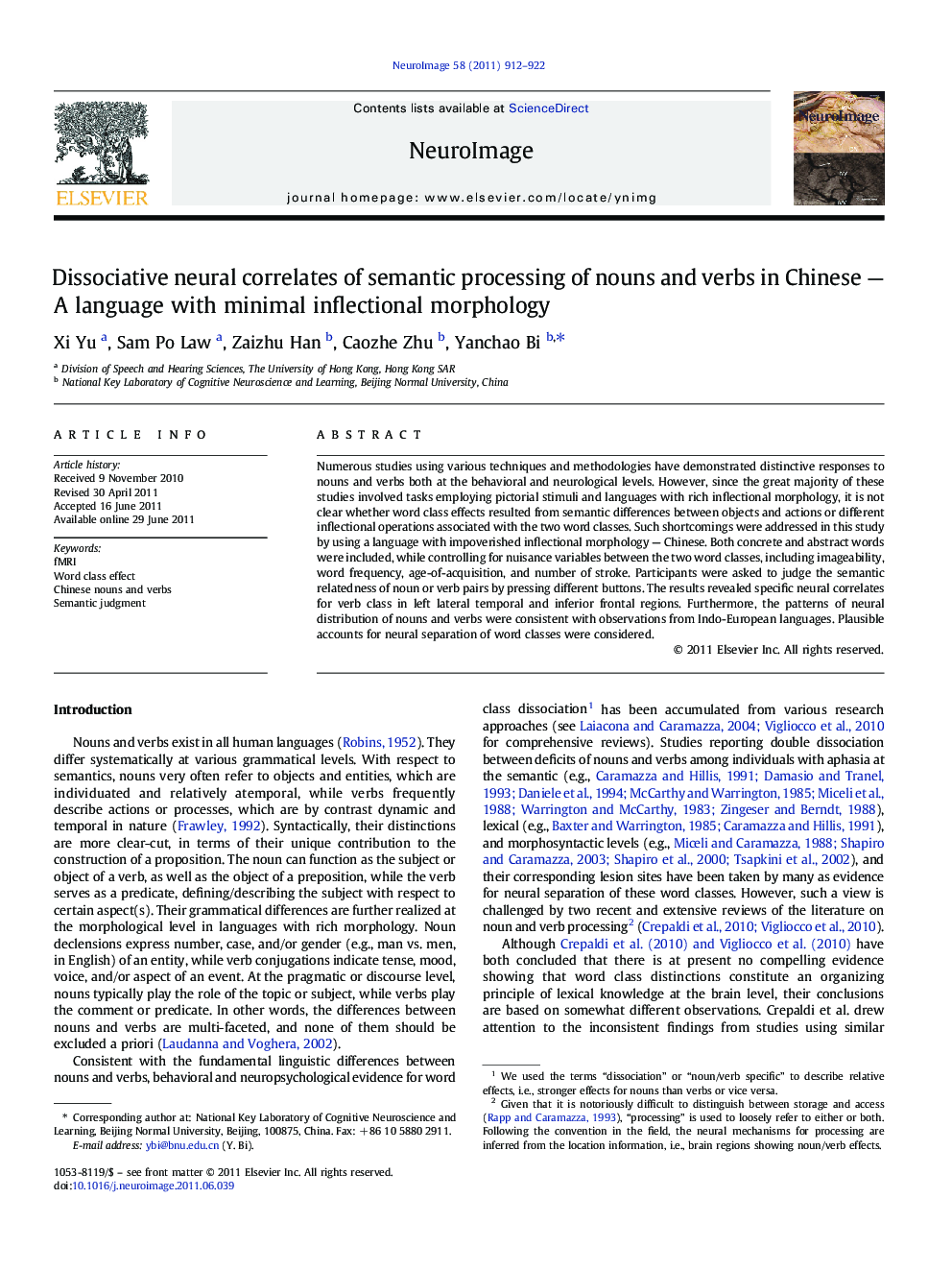| کد مقاله | کد نشریه | سال انتشار | مقاله انگلیسی | نسخه تمام متن |
|---|---|---|---|---|
| 6032256 | 1188739 | 2011 | 11 صفحه PDF | دانلود رایگان |

Numerous studies using various techniques and methodologies have demonstrated distinctive responses to nouns and verbs both at the behavioral and neurological levels. However, since the great majority of these studies involved tasks employing pictorial stimuli and languages with rich inflectional morphology, it is not clear whether word class effects resulted from semantic differences between objects and actions or different inflectional operations associated with the two word classes. Such shortcomings were addressed in this study by using a language with impoverished inflectional morphology - Chinese. Both concrete and abstract words were included, while controlling for nuisance variables between the two word classes, including imageability, word frequency, age-of-acquisition, and number of stroke. Participants were asked to judge the semantic relatedness of noun or verb pairs by pressing different buttons. The results revealed specific neural correlates for verb class in left lateral temporal and inferior frontal regions. Furthermore, the patterns of neural distribution of nouns and verbs were consistent with observations from Indo-European languages. Plausible accounts for neural separation of word classes were considered.
⺠Neural correlates of nouns and verbs were studied in Chinese with minimal inflection. ⺠Both abstract and concrete nouns and verbs were examined by the conjunction analysis. ⺠Specific areas for both concrete and abstract verbs were found in LpSTG&MTG and LIFG.
Journal: NeuroImage - Volume 58, Issue 3, 1 October 2011, Pages 912-922